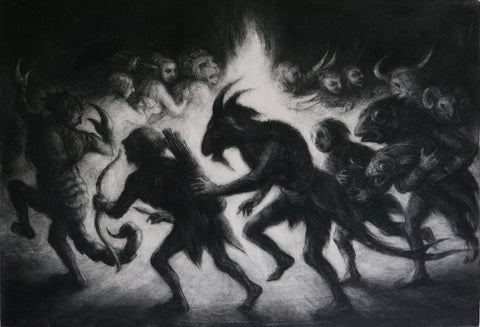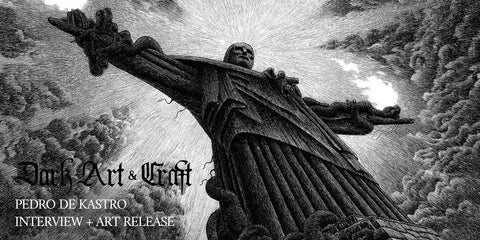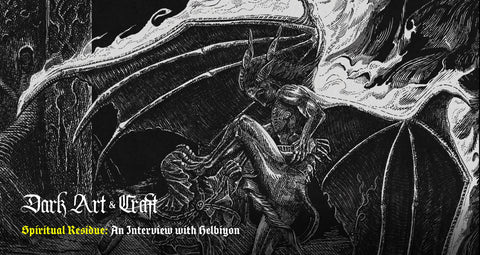
Artist Philippe de Champaigne, Still-Life with a Skull, c. 1671 vanitas painting oil on panel. Image via Public domain via Wikipedia
Artists have captured death's looming specter throughout history - Creating the skulls, skeletons and macabre symbols that have become Memento Mori or when translated "remember that you will die". During years of war, political unrest, famine and strife depictions of loss and morbid topics are commonplace resulting in a vast collection of death focused paintings and creations. Symbolically wine, musical instruments, skulls, flowers and hourglasses become reminders of the vanity and brevity of life. During the Sixteenth and Seventeenth centuries when organized religion and the afterlife filled the minds of European Artists Memento Mori paintings became elaborate and filled with the pleasures' of life or Vanitas.

Memento Mori (verso) Andrea Previtali (–1528) image via wikipedia commons PD-Art photographs

A beautiful Roman skull mosaic representing the Wheel of Fortune. Image via Wikipedia commons from the 1st century BC an early example of a Memento Mori theme Naples National Archaeological Museum

Titelprent met een schedel en een zandloper Memento Mori, 1626 image via wikipedia commons

A skeleton, seated on his grave, awakes to the last trumpet on judgement day. Etching by Martin after J. Gamelin, 1778/1779. Credit: Wellcome Library, London. Wellcome Images images@wellcome.ac.uk http://wellcomeimages.org A skeleton Crayon 1779 By: Jacques Gamelin
Dark Art & Craft print based on 15th century Master IAM of Zwolle Memento Mori Courtesy of the Metropolitan Museum of Art, New York. Image via Wikipedia.

Memento Mori still life with musical instruments, books, sheet music, skeleton, skull and armor, c.1650 oil on canvas by Carstian Luyckx. Image via Wikipedia.

Scheuchzer, 1731-33; Memento Mori image via Wikipedia commons
Classic Painted Memento Mori Works
Memento Mori paintings are meant to remind one of the inevitability of Death. These can be seen as morbid, as many detractors of the style have stated, or an optimistic reminder to live ones life fully while it lasts - A reality to ponder rather than fear.

William Michael Harnett - Memento Mori, "To This Favour" This file is made available under the Creative Commons CC0 1.0 Universal Public Domain Dedication

“Vanitas Still Life” by Pieter Claesz, 1630. (Photo: Public domain via Wikipedia)

Michelangelo Merisi da Caravaggio, Saint Jerome Writing, 1605–05. Image via Wikimedia Commons CC

Adriaen van Utrecht- Vanitas - Still Life with Bouquet and Skull. {{PD-US}} – U.S. work that is in the public domain. Image via wikipedia.

Great Vanity (Stoskopff) image via wikipedia

Jan Davidsz de Heem Memento Mori with a Skull under a Vase with Flowers {{PD-Art|PD-old-100-expired} image via Wikipedia commons

Cornelis Norbertus Gysbrechts, Vanitas Still Life c. 1668 via Wikimedia Commons. (Detail) via Google Arts and Culture
Gravestone with memento mori and hourglass, image via Wikipedia commons. St Nicholas' Church in the village of Ash, in the Ash-with-Westmarsh. Image © Acabashi; Creative Commons CC-BY-SA 4.0; Source: Wikimedia Commons
Modern Memento Mori
Memento Mori (print created in 1916) by Julie de Graag. The 19th century de Graag (1877–1924) was a female Dutch graphic artist and painter who mainly produced graphic works in an Art Nouveau style. Her Memento Mori skull can be seen as a modern take on the age old theme.
Memento Mori Resources
View Memento Mori Art prints on Dark Art & Craft
These Lush 17th-Century Paintings Were Striking Reminders of Mortality
7 Ways of Looking at the Memento Mori, Art History’s Spookiest—and Most Misunderstood—Genre
What role did the memento mori play in Renaissance Europe?
How Art History's Most Macabre Genre Carries an Optimistic Message
Have a favorite Memento Mori work we haven't shown? Comment below!








Great selection ! In sharing, french artist, I invite you to discover my series of drawings in progress: “Vanity”, of which the IPCC report is at the origin : https://1011-art.blogspot.com/p/vanite.html